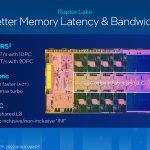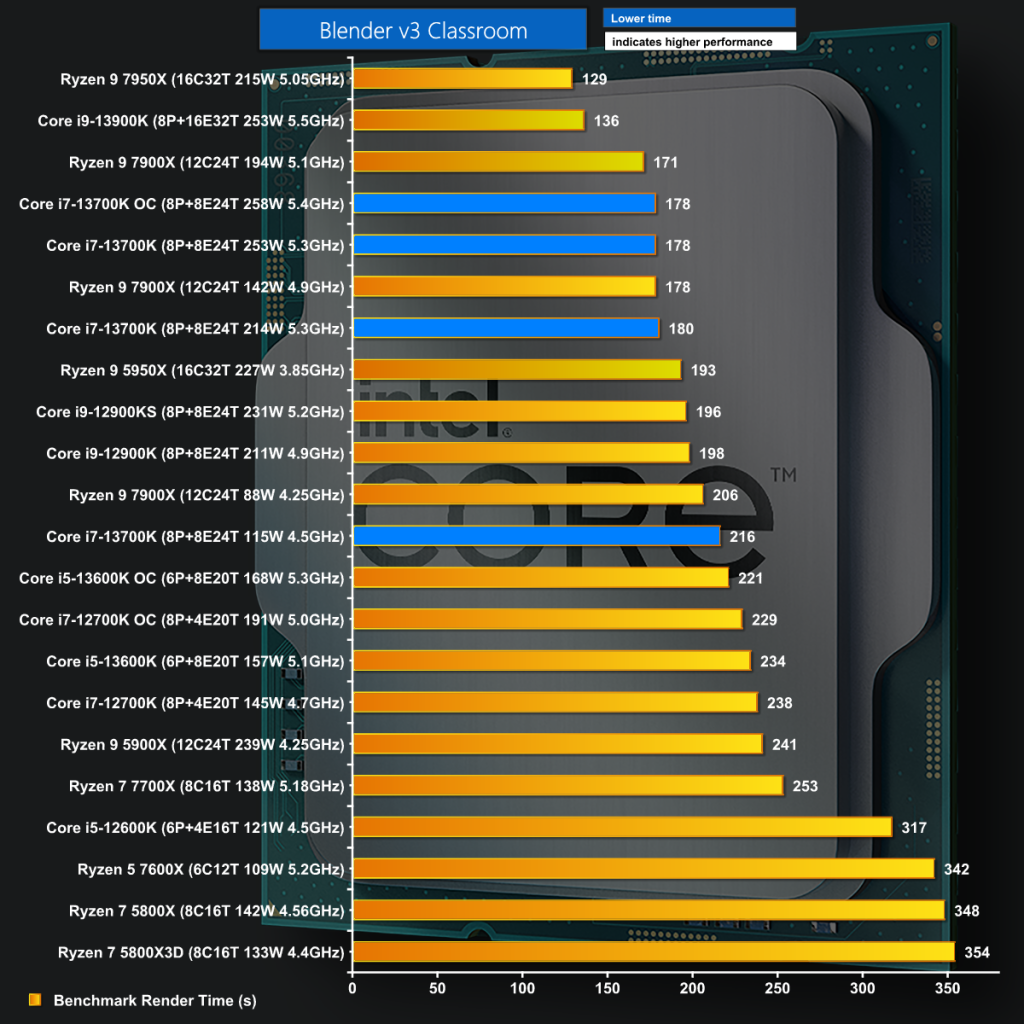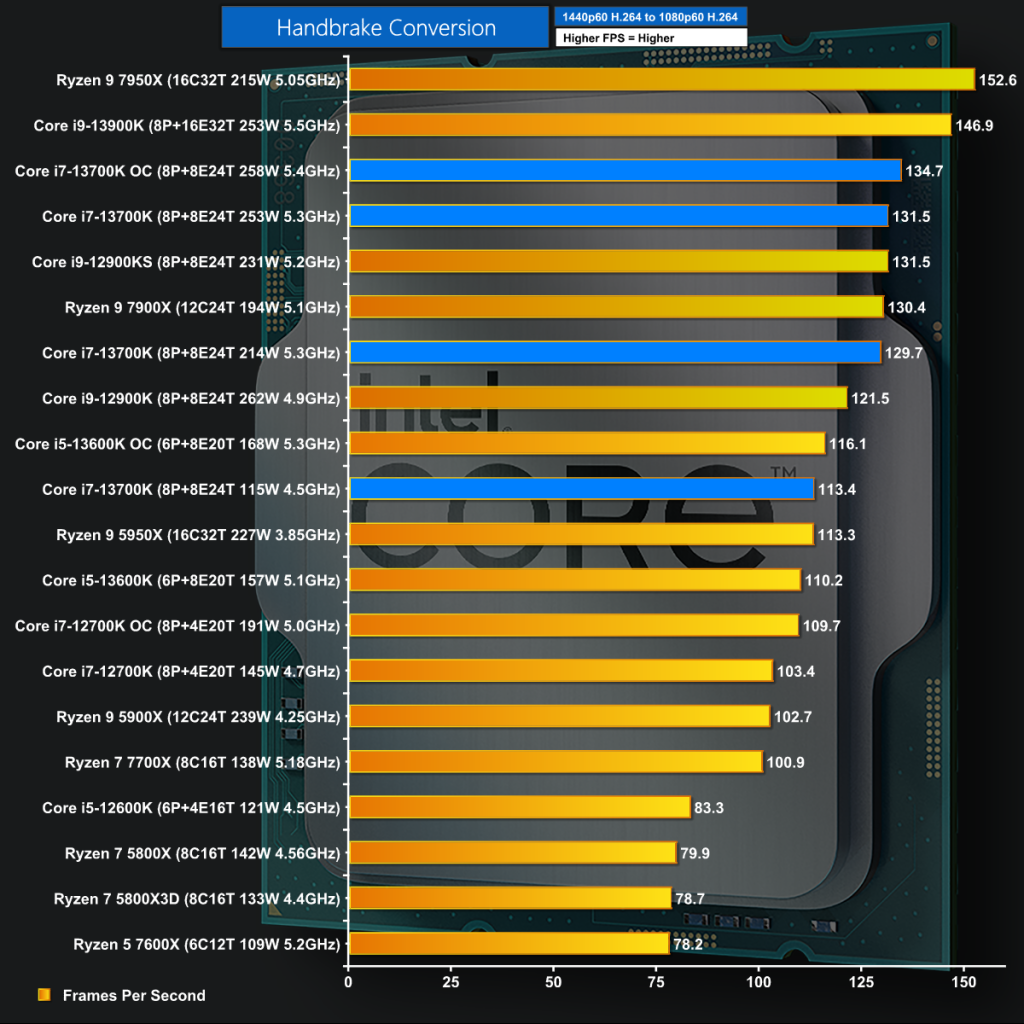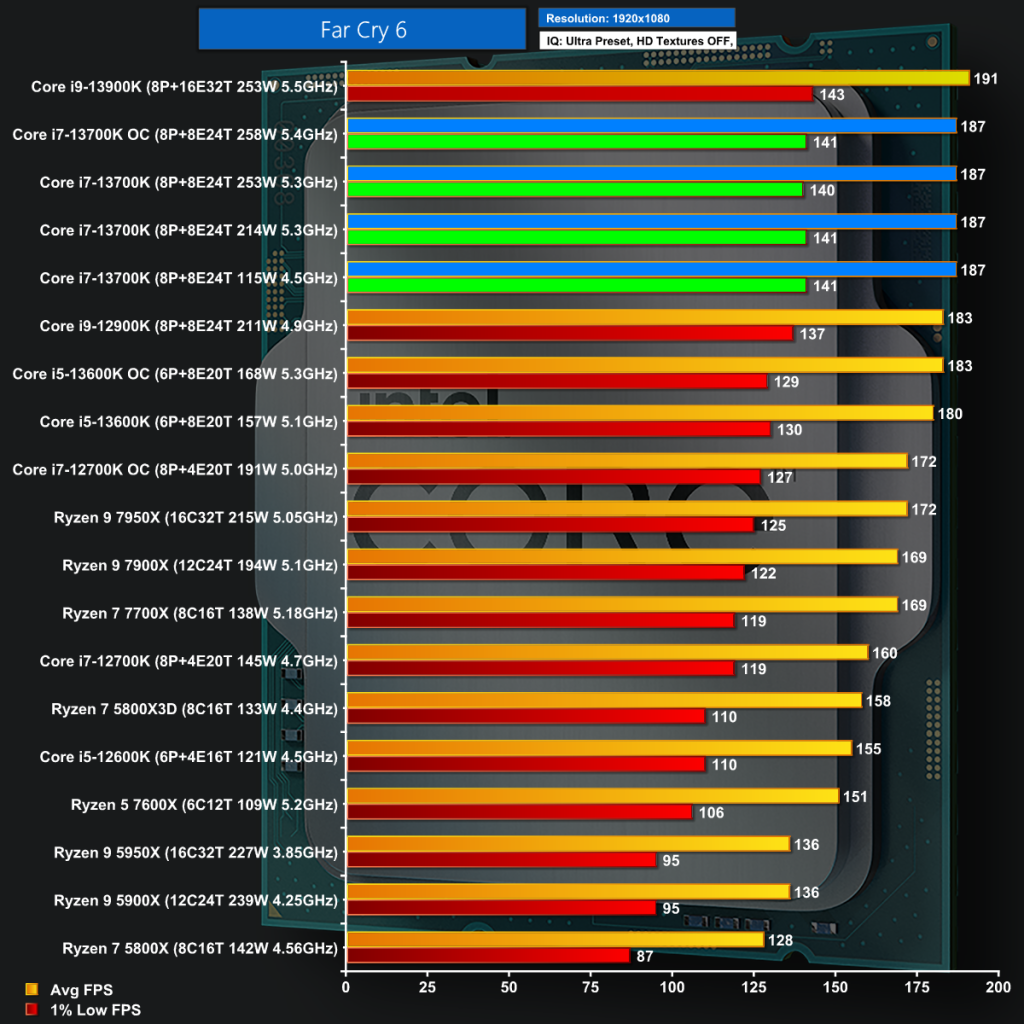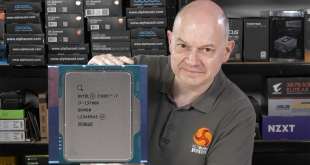
KitGuru was impressed by Intel's Core i7-12700K which delivered plenty of stomp at a reasonable price. In today's review of the Core i7-13700K we expected this mid-range CPU might deliver more of the same but instead have been amazed to discover it can actually beat the mighty Core i9-12900KS.
Time stamps
00:00 Start
00:36 The technology
02:50 The setup
05:58 BIOS / Blender
07:19 Cinebench R23
07:48 Efficiency
09:26 Power and Temps
09:45 Differences in boards
10:09 Result discussion
11:36 Blender V3 Classroom
12:41 Handbrake conversion H.264/H.265
13:29 7ZIP Benchmark
13:48 3DMark CPU Profile
14:11 Gaming benchmarks
15:46 Leo’s closing thoughts
In recent times KitGuru has reviewed the Intel Core i9-13900K HERE and the Core i5-13600K HERE while over on the AMD side of things Luke has reviewed all four models of Ryzen 7000. Today we are reviewing the Core i7-13700K which will wrap up the first wave of releases from Intel's 13th Gen and AMD Zen 4.
Specification:
- P-Core Base Frequency: 3.0GHz
- E-Core Base Frequency: 2.5GHz
- Socket: LGA1700
- Intel Smart L3 Cache: 30MB
- L2 Cache: 24MB
- Processor Cores: 16 (8P + 8E)
- Processor Threads: 24
- Memory Support: DDR4-3600MHz & DDR5 5200-6000MHz
- Intel Turbo Boost Max Technology 3.0 Frequency: 5.4GHz
- P-Core Max Turbo Frequency: 5.3GHz
- E-Core Max Turbo Frequency: 4.2GHz
- CPU PCIe Lanes: 20
- Unlocked: YES
- Chipset: Intel 600 & 700 Series Compatible
- Graphics: Intel UHD 770
- Base Power: 125W
- Maximum Power: 253W
We have previously covered the changes that Intel made from 12th Gen Alder Lake to 13th Gen Raptor Lake. The biggest change has been the improvement to the P-cores which results in considerably faster clock speeds in the Core i9 and aded to that we see an increase in the number of E-cores. There are other changes such as the increase in L3 cache and support for faster DDR5 memory. Our main interest with the Core i7-13700K is that it shares the 8P+8E core configuration with the Core i9-12900K which gives us an opportunity to compare 13th Gen Raptor Cove technology with 12th Gen Golden Cove.
Performance and Testing
Test System:
- Processor: Intel Core i7-13700K (24 cores/32 threads)
- CPU Cooler: Corsair H150i Elite LCD
- Motherboard: Asus ROG Maximus Z790 Hero BIOS 0502
- Memory: 32GB G.Skill Trident Z5 RGB DDR5-6000
- Graphics card: Gigabyte Radeon RX 6950 XT Gaming OC 16GB
- Power supply: Seasonic Prime TX-1600W Titanium
- SSD: 500GB Sabrent Rocket 4.0 M.2 NVMe
- OS: Windows 11
Our test system for this review is carried over from our Core i9 and Core i5 reviews however, as we show in our video, we also had a BIOS update to contend with from Asus and also used a Gigabyte Z790 Aorus Master to double check some of our test results.
Cinebench R23 Multi Core
In Cinebench R23 Multi Core we see the new Core i7 on Auto performs very well, beating the Core i9-12900KS by a margin of three percent, however it uses more power in the process. This is interesting as it suggests the improvements to Raptor Cove allow it to run at higher clock speed than Golden Cove but deliver very few benefits in their own right.
Power Consumption in Cinebench R23
Power Consumption in Cinebench R23 tells us an unpleasant tale as the Core i7-13700K draws 253W on Auto which is the same power used by Core i9-13900K running 200MHz faster. As we demonstrate in our video the Gigabyte Z790 Aorus Master goes to further extremes and increases the Vcore from 1.27V to 1.33V which increases CPU power to 280W.
CPU Temperature in Cinebench R23
We can see the consequence of the extra power when we look at CPU temperature in Cinebench R23. Where the Core i9 runs at 87 degrees C the Core i7 shoots up to 99 degrees. Reducing the power limit to 214W cures this behaviour and drops the temperature by 10 degrees C while barely affecting performance.
Cinebench R23 Single Core
In Cinebench R23 Single Core we see the Core i7 runs at a healthy 5.4GHz and delivers impressive results.
Blender v3 Classroom
The Blender Classroom render test shows the Core i7 performs in the same league as the Ryzen 9 7900X. We also see the Core i7 can happily run on 214W while delivering almost identical performance to the Auto 253W setting.
Handbrake H.264 Conversion
In our Handbrake H.264 Conversion test we see the Core i7 narrowly beating the 12-core Ryzen 9 7900X and achieving 90 percent of the performance of the Core i9-13900K.
Handbrake H.265 Conversion
In Handbrake H.265 Conversion the frame rates are incredibly close and while the Core i7 does well it is beaten by the Ryzen 9 7900X, albeit by a tiny margin.
7-Zip Benchmark
7-Zip is a test of pure CPU grunt and we see the Core i7-13700K slip down the chart below the older Ryzen 9 5950X. Even so, performance is very good.
3DMark CPU Profile
In 3DMark CPU Profile the Core i7 dukes it out with the Ryzen 9 7900X and does a very good job.
Borderlands 3 at 1080p
Borderlands 3 at 1080p threw up an unexpected result where the Core i5-13600K beat the Core i7-13700K by a tiny margin. Both CPUs did well and delivered a fine gaming experience, however that looks like an odd result.
Far Cry 6 at 1080p
In Far Cry 6 at 1080p we see the new Core i9-13900K at the top of the chart with the Core i7-13700K very close behind. Mind you, the Core i5-13600K also does incredibly well in Far Cry 6.
Hitman 3 at 1080p
The Core i7-13700K does very well in Hitman 3 at 1080p but once again the Core i9 tops the chart.
Shadow of the Tomb Raider at 1080p
Shadow of the Tomb Raider at 1080p is a game that shows AMD in a good light with the Ryzen 7 3D leading the field and the two Ryzen 9 models close behind. Intel Raptor Lake follows after that with Core i7-13700K doing fairly nicely.
There is no denying the performance of Intel Core i7-13700K is pretty darned impressive, however its behaviour is a different story.
On Auto settings with XMP enabled the Core i7 draws the same power as the Core i9, despite having fewer cores that run at a slower clock speed. The consequence is that while the Core i9 runs at a temperature close to 90 degrees C when the CPU is fully loaded, we instead see the Core i7 hitting 99 degrees and then throttling slightly.
This can be easily fixed by setting a manual power limit in the BIOS, however it feels somewhat shoddy to push this task onto the user when it could be easily fixed with an update to the BIOS.
In other respects the Core i7-13700K is very impressive, but it cannot match the Core i9-13900K for raw performance and neither can it match the Core i5-13600K in terms of value for money. It is entirely logical that the Core i7 sits between the Core i5 and the Core i9 but this means its potential customer base is narrowly defined.
Gamers on a budget can happily buy the Core i5 while being confident they can render the occasional video without difficulty while hardcore power users should plump for the more expensive Core i9. The Core i7-13700K will instead appeal to users who play games and also create content, and while they are happy spending money don't want to go absolutely crazy.
You can buy the Intel Core i7-13700K for £470 from Overclockers UK HERE.
Discuss on our Facebook page HERE.
Pros:
- Good all-round performance.
- Decent value for money.
- Z790 platform and fast DDR5 work really well together.
Cons:
- On Auto the Core i7 runs hot and is hungry for power.
- Gamers can happily stick with Core i5-13600K.
- Content creators should choose Core i9 or Ryzen 9.
KitGuru says: Core i7-13700K has huge potential but needs better support from the BIOS writers.
 KitGuru KitGuru.net – Tech News | Hardware News | Hardware Reviews | IOS | Mobile | Gaming | Graphics Cards
KitGuru KitGuru.net – Tech News | Hardware News | Hardware Reviews | IOS | Mobile | Gaming | Graphics Cards











